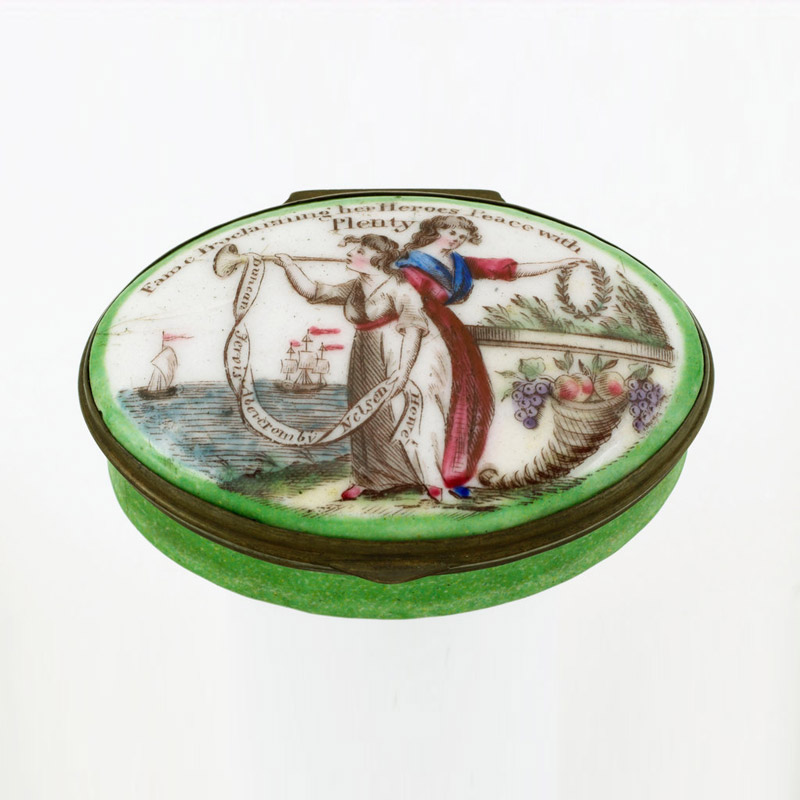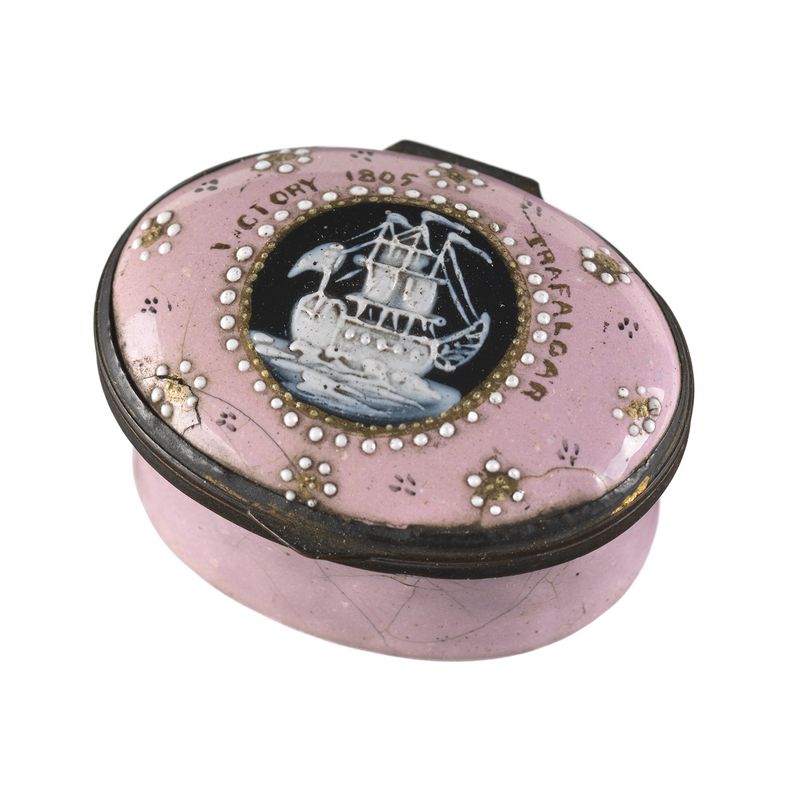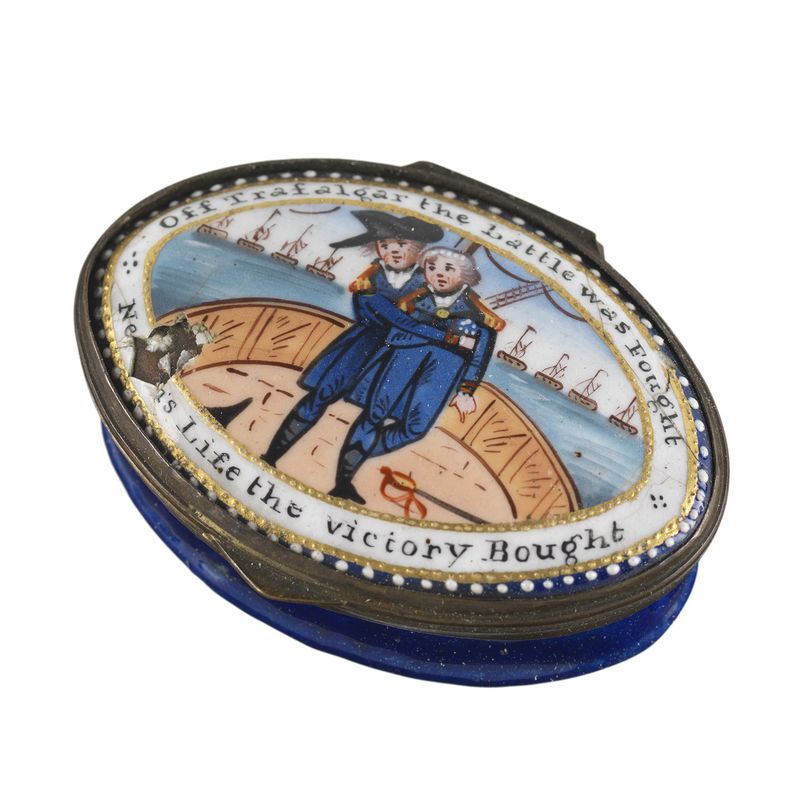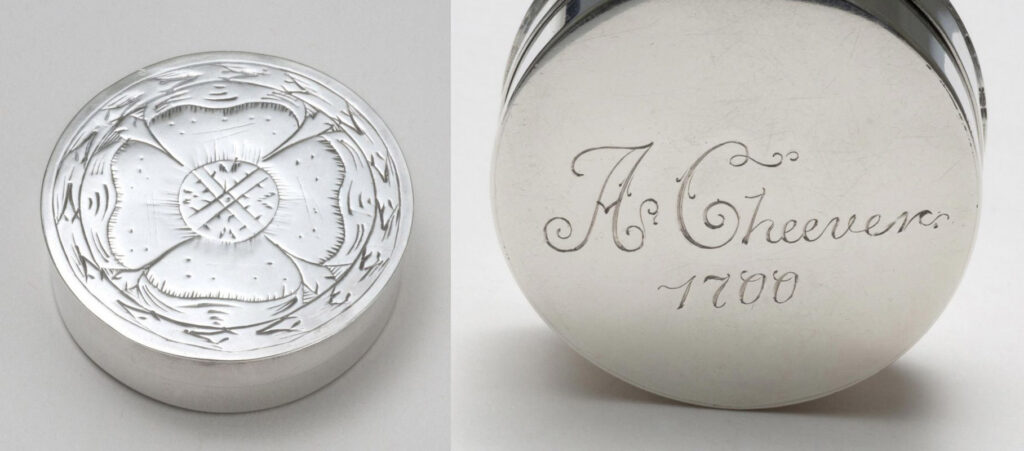The patch box has had us fooled.
Appearing decades after the first fashionable patches, it outlasted them by decades too. And because of the enormous numbers of boxes made and the enormous numbers that survive, we have exaggerated the extent of the patching fashion.
But the relationship between the patch and its box was not simple and in neither case can the existence of one be extrapolated from the other. Certainly, sometimes you could open the lid of a patch box and find patches, but more often you would not.
But what about the term ‘patch box’ – isn’t this the clue? Doesn’t this prove a very specific use, even for the vast array of mass-produced enamels? We think not: as the years went on it was just a name, indicating a small size and probably the presence of a mirror. Consider the glove box in a car today. In the early years of motoring it may have held driving gloves, but today more likely holds the car manual, spare change, a dead biro, and the sat nav.
We can see this quite clearly in a case of attempted industrial espionage from 1889. Henry Rigby was accused of approaching one of the workers at a firm that had a unique process for making – and here the news report uses air quotes – ‘a particular kind of “ointment” or “patch” box’. He asked the worker ‘if he could get him a patch-box mould and cover’, with the promise of work in exchange. Now, in 1889 no one would have dreamt of wearing a patch, yet the term continued to be understood in relation to a certain kind of small container. The jury, by the way, acquitted Henry Rigby.
That the name of the container had been entirely detached from its nominal contents is perhaps even clearer in the case of Nelson memorabilia.
There were astonishingly large numbers of patch boxes produced to honour the admiral. The National Maritime Museum in Greenwich has a collection of over 130 (sometimes just the lid survives), most of them different.
Some were produced to celebrate his key naval victories, but the majority were made after his death at the Battle of Trafalgar in 1805. The early nineteenth century was an era of classically inspired dress forms in soft pliant fabrics. In the midst of this turn to simplicity, the thought of patching would have been impossible. And yet, patch boxes commemorating England’s naval hero rolled out of the workshops and into people’s homes and collections.





But the divergence between the patch box and the patch happened long before this.
Here is a small silver patch box probably made in Boston in the late seventeenth or early eighteenth century. Engraved on the back is ‘A. Cheever. 1700’.
The Philadelphia Museum of Art, in whose collection it is, suggest that it may have been a gift to a girl called Abigail Cheever on her tenth birthday, perhaps from her namesake and aunt.
The elder Abigail was a member of the First Church in Boston. It is inconceivable that church goers in this newly established puritan settlement would have thought patching and cosmetics suitable for a young girl – or suitable for anyone, come to that. But the box itself was an ideal gift: small, precious, and pretty.
So the name of the patch box and its continuing life has had us all duped.

